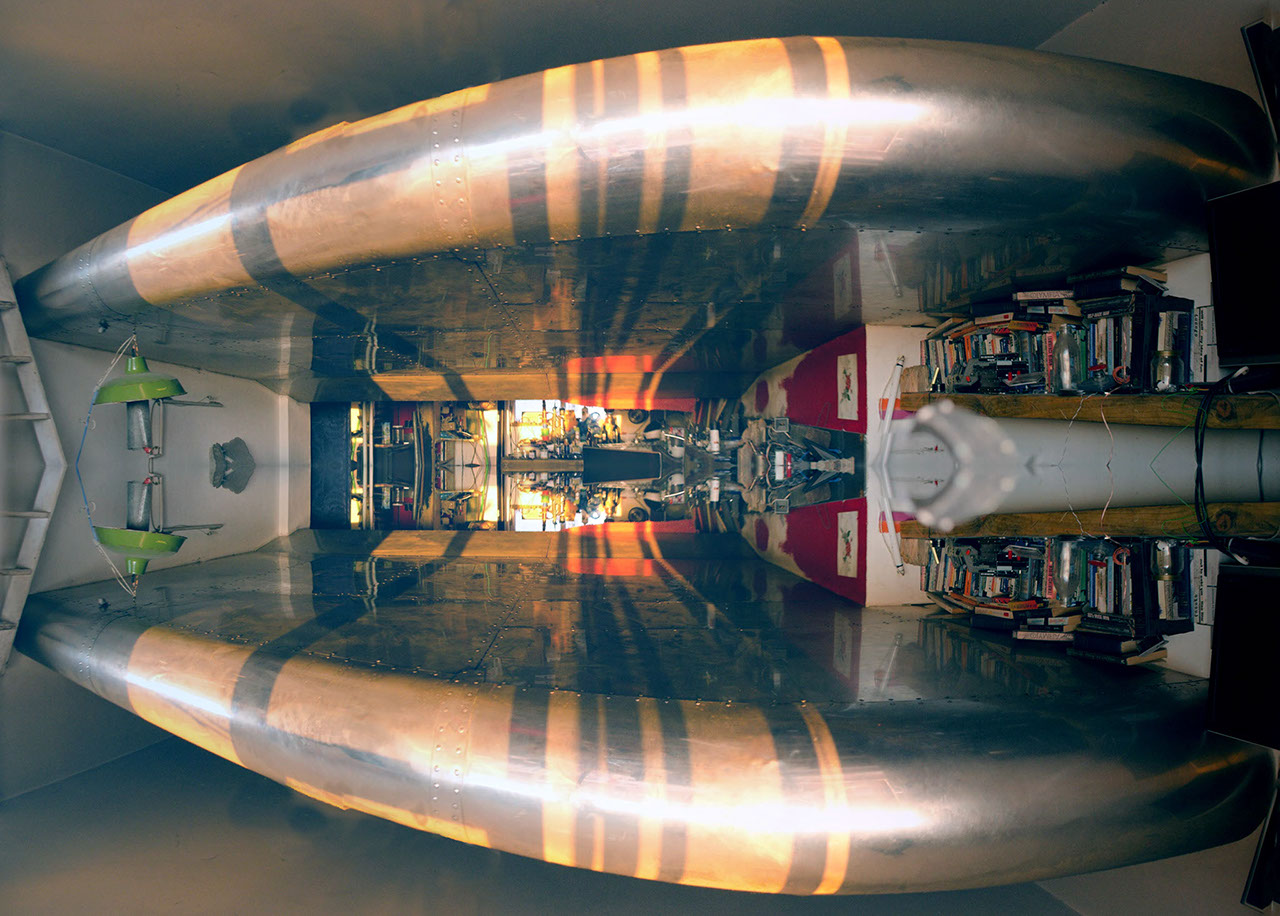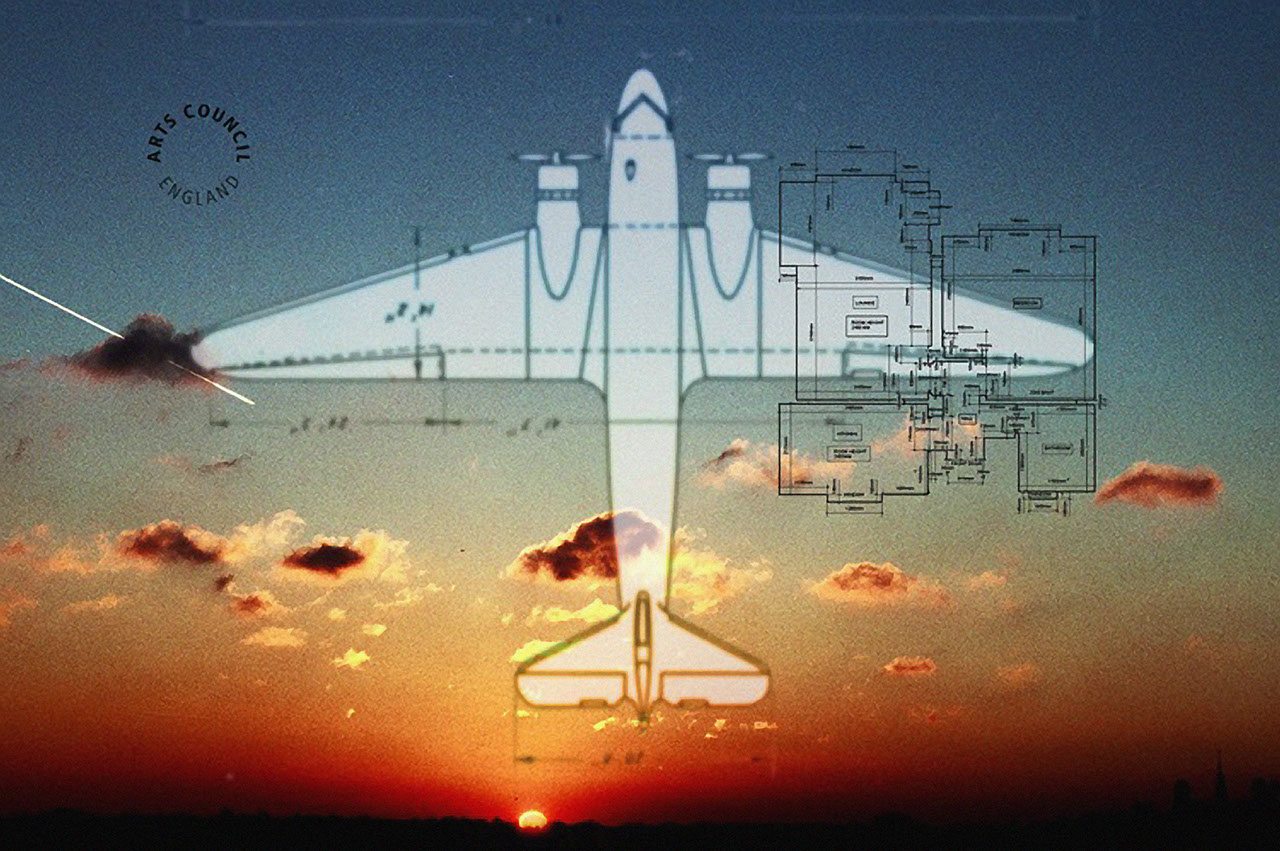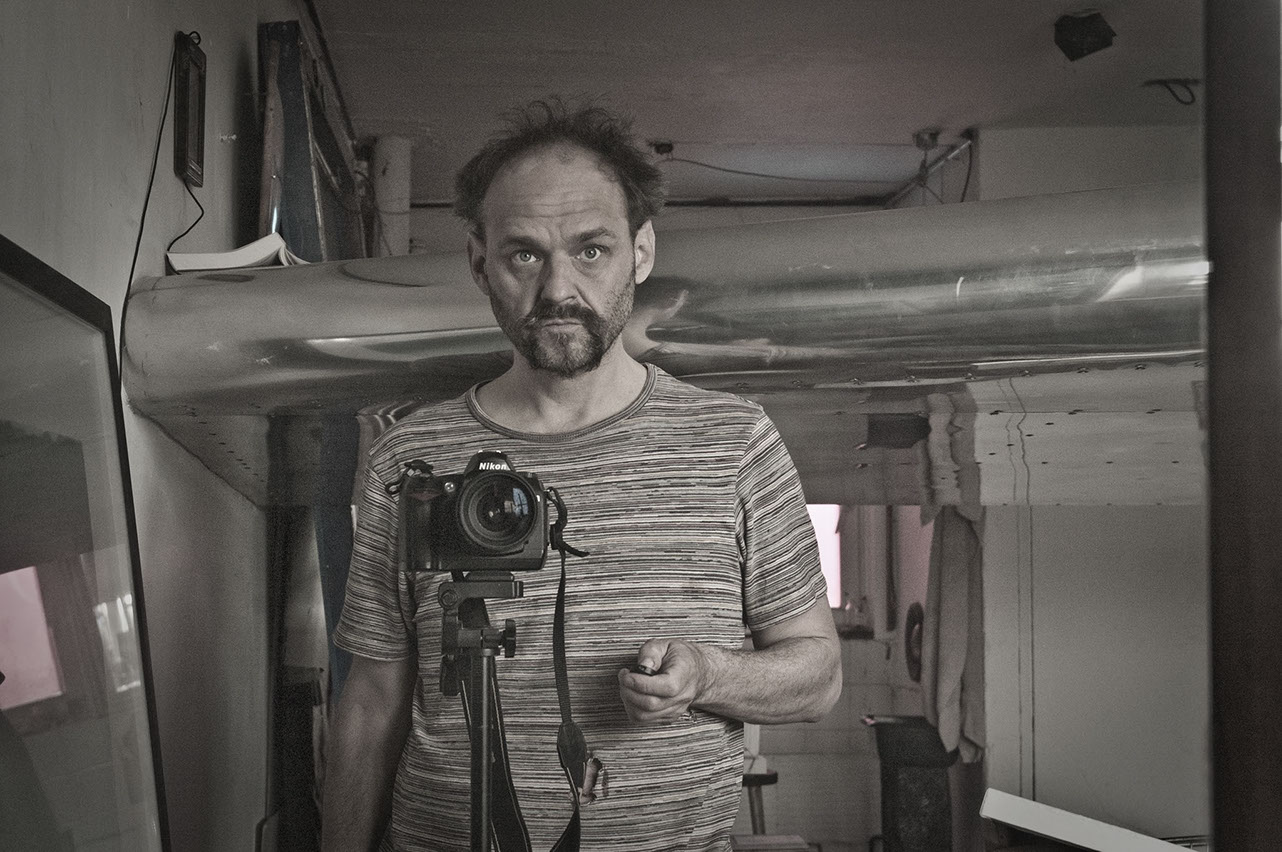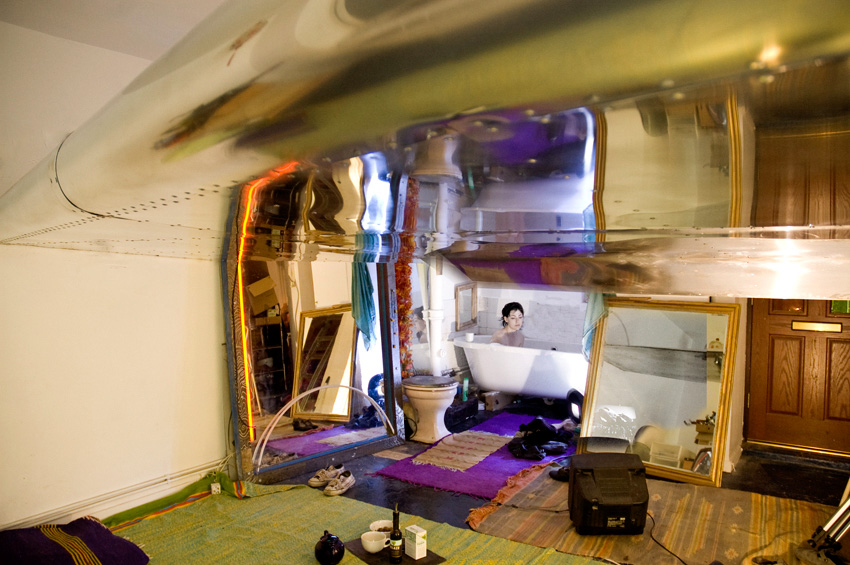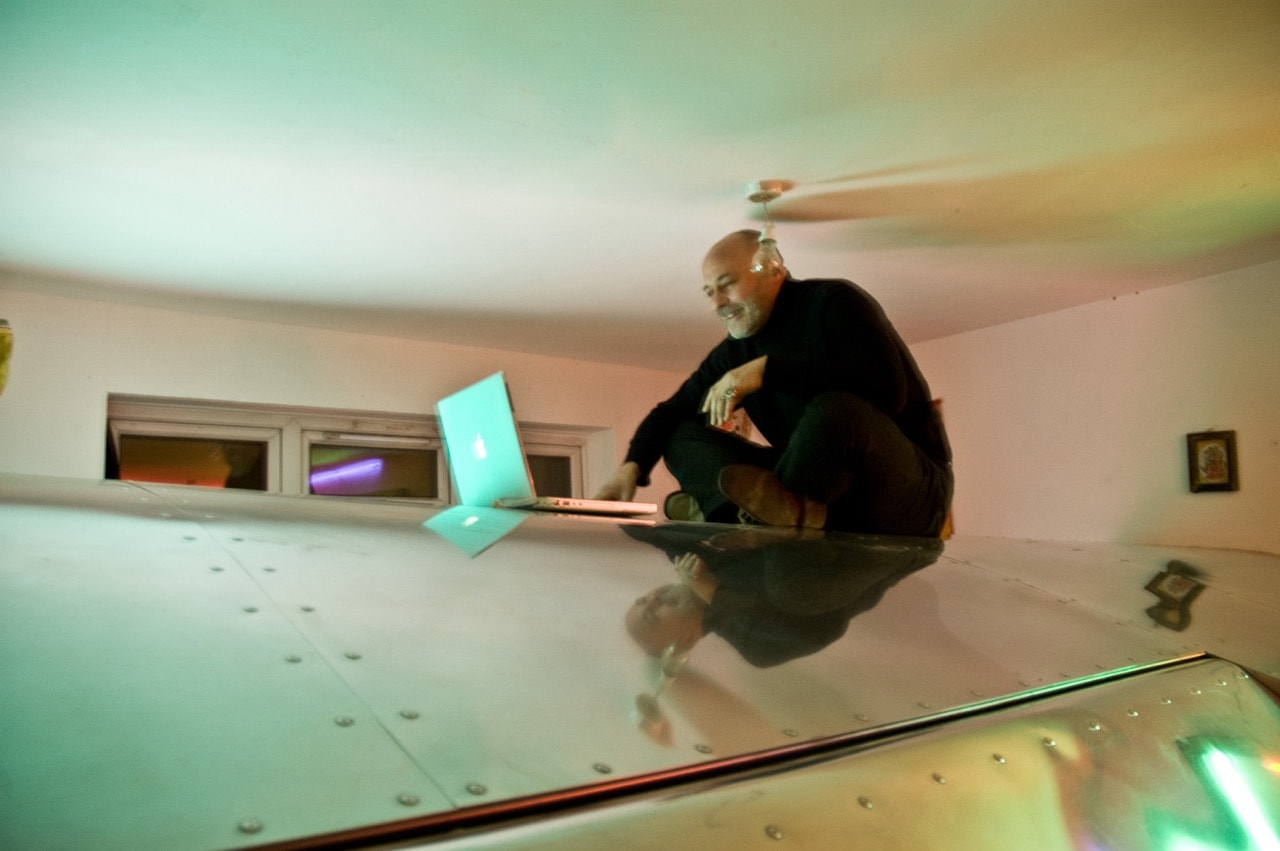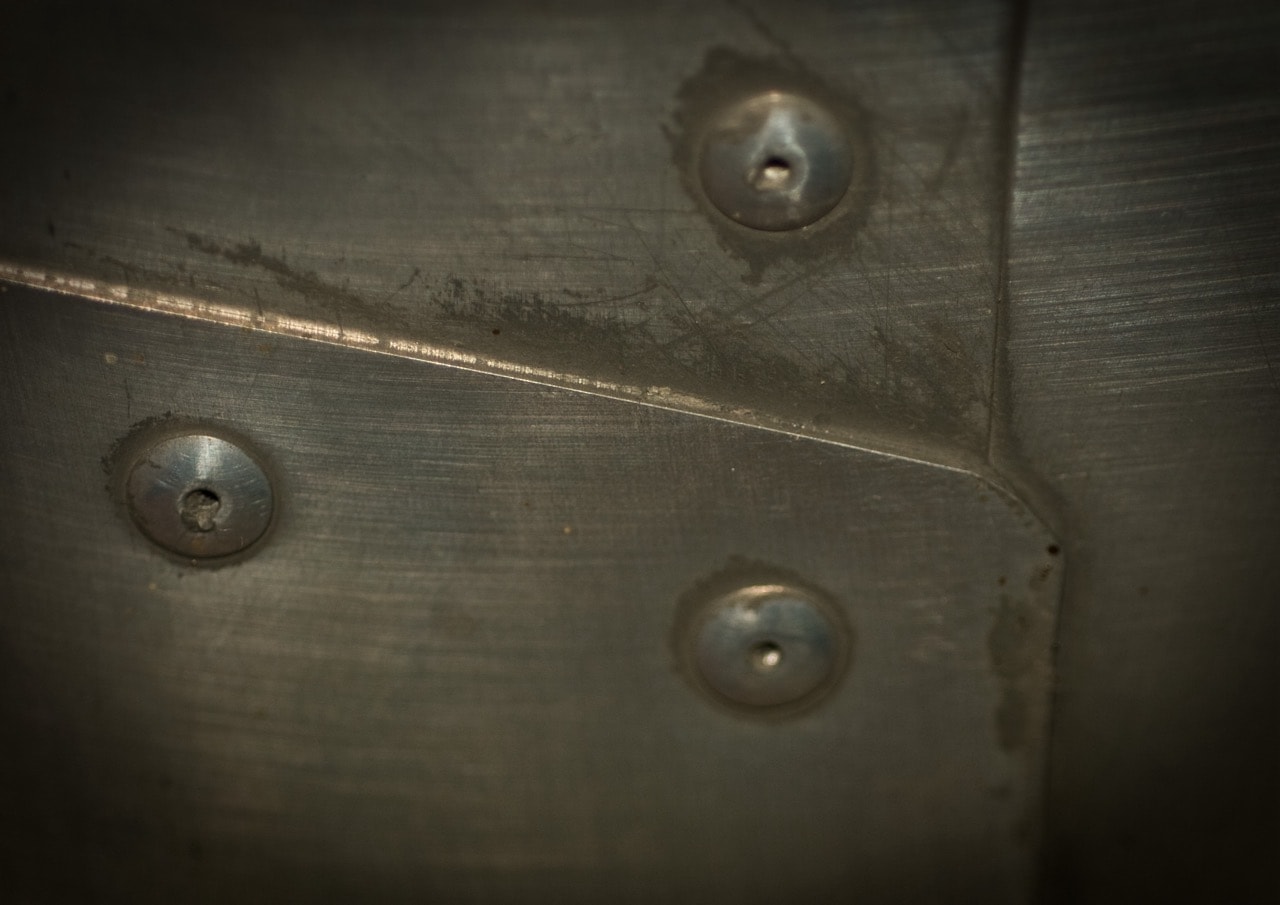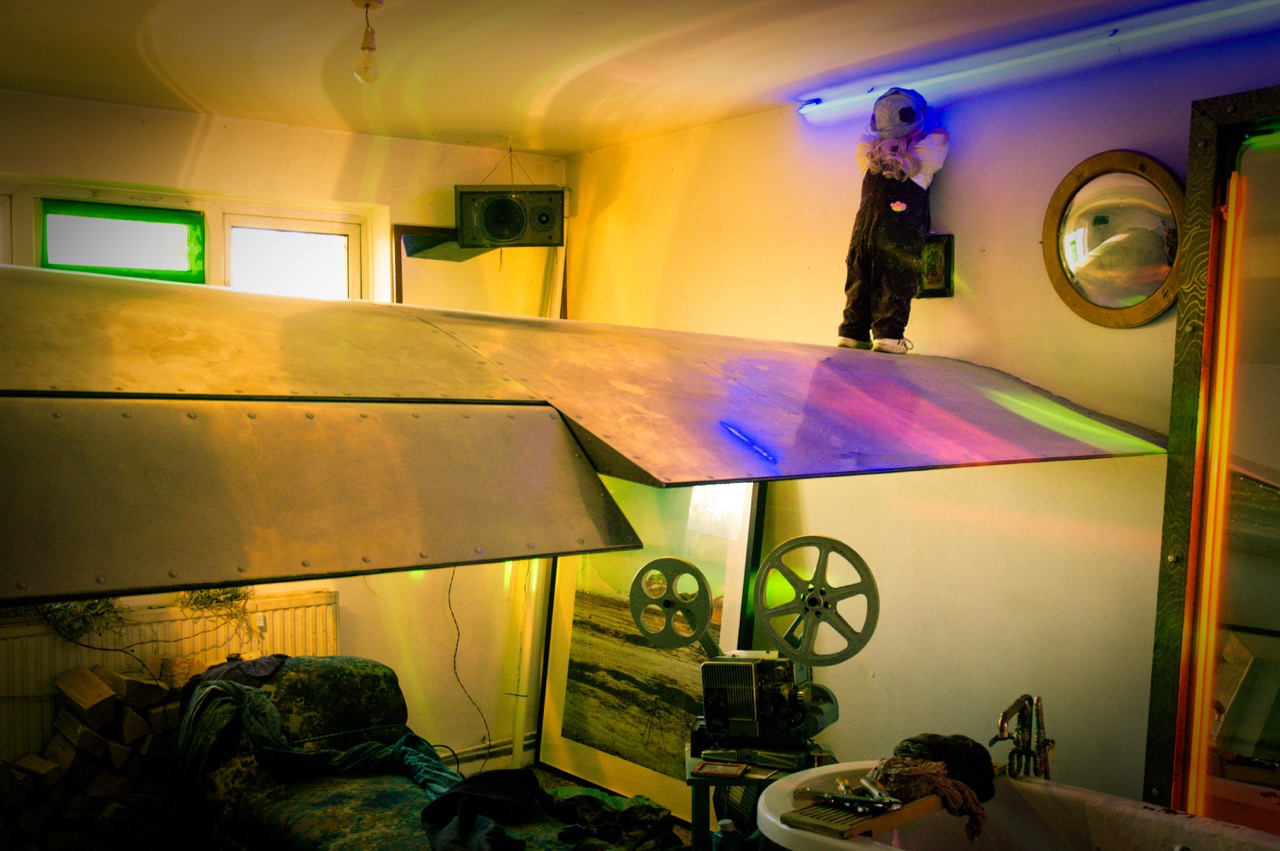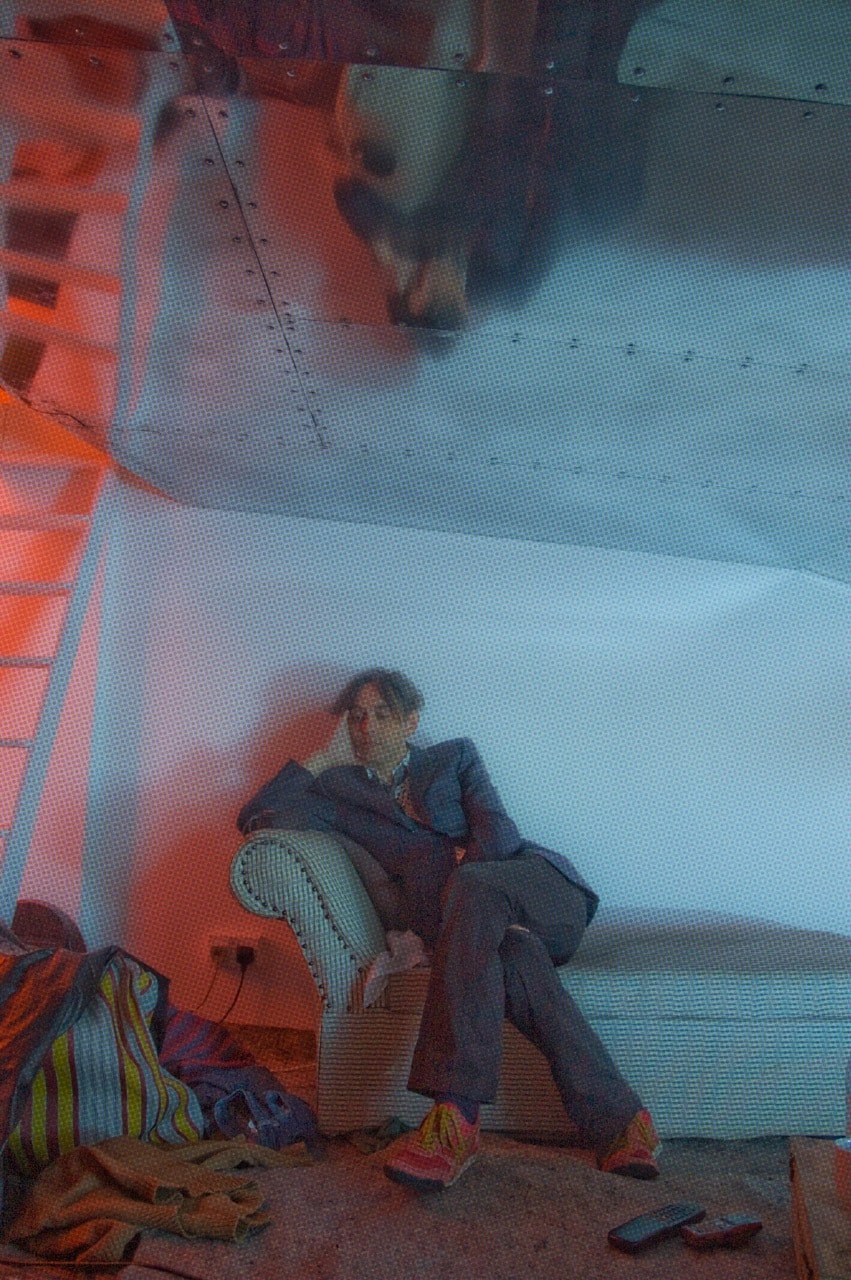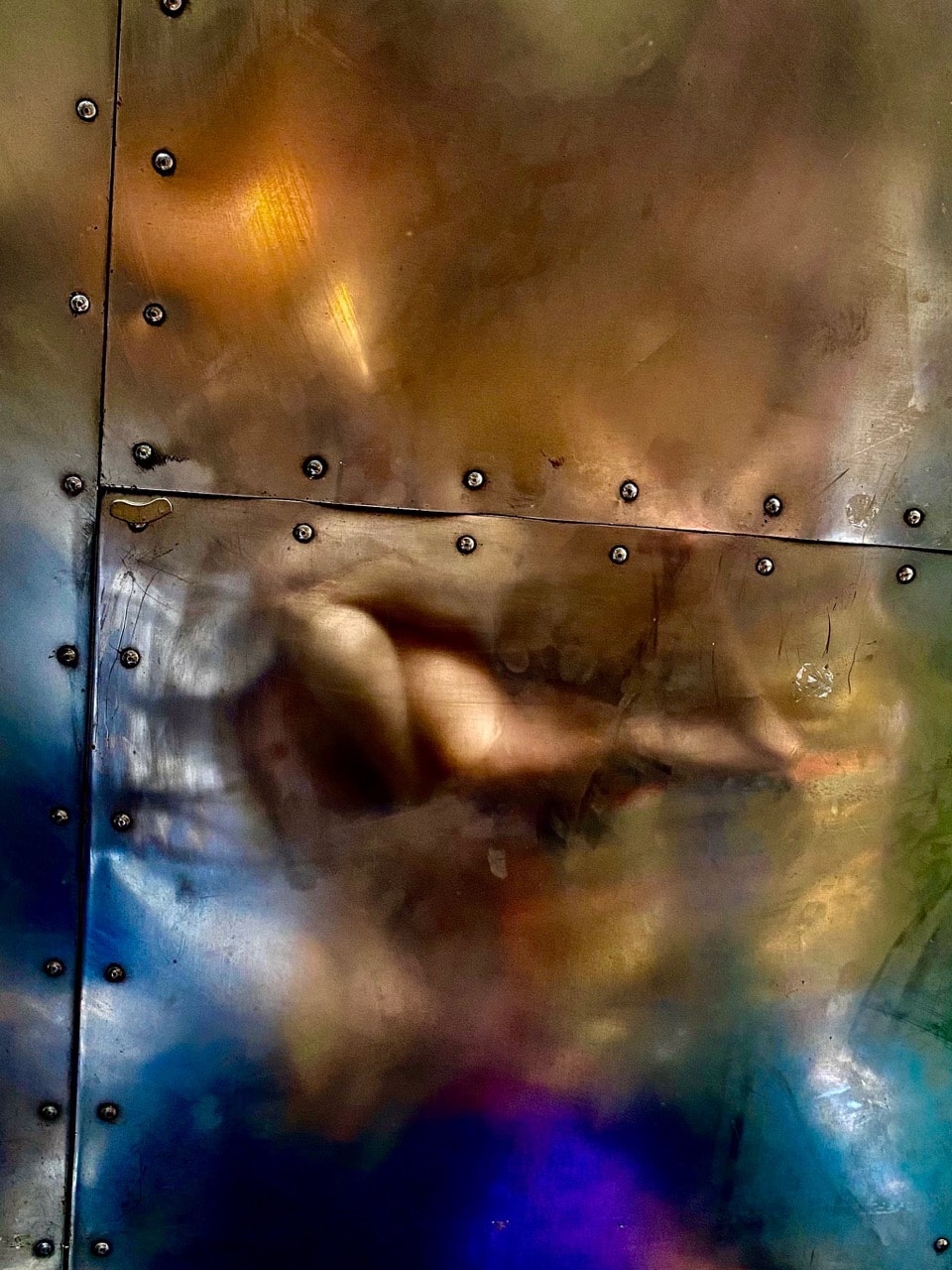Depuis 2006 à Londres,
Phlight
sort du cadre balisé de l'art contemporain, notamment du white-cube.
Au cœur battant de son appartement, quelque part dans le quartier de Fulham, l'artiste britannique Simon Tyszko (né en 1959) cohabite en effet depuis dix ans maintenant avec une aile d'avion cargo qu'il a minutieusement fait confectionner : cette réplique à échelle 1 perce donc son habitat de part en part, dévore peu à peu l'espace vital de l'artiste, repoussant sa propre capacité à supporter cette intrusion massive. Performance sur ses propres capacités de survie dans un logement devenu plus abri animal qu'habitat humain,
mais de quel nom est donc cette installation ?
Irruption et stagnation volontaires de notre industrie volante au cœur du domestique certes,
un ouvrage d'art ?
de design ?
d'architecture?
Laboratoire esthético-philosophique en tout cas, et politique assurément.
L'utopie moderniste ne peut-elle que choir et mourir dans l'art d'aujourd'hui ? L'absurdité capitaliste serait-elle la vraie terroriste de nos vies ? Depuis le 11-Septembre, Simon Tyszko n'en est pas à ses premières armes de réflexion sur le sujet : en 2002, il a confectionné une Barbie kamikaze (Suicide Bomber Barbie, cliquez ici) lardée d'explosifs.
Docteur Lucilee Bach Sorbonne 2017
Phlight
an extended durational performance
with an aeroplane in an apartment.
n September 11th, 2001, the fall of the Twin Towers nudged the world into a new era of hysterical and irrational conspiracy theorising. Arguments flared, suggesting that the towers were deliberately demolished by government forces, as clouds of dust and debris distorted and obscured the light of reason, fuelling reactionary rage inherent in the shadow of progressive modernism.
With "PHLIGHT," Tyszko contends that instead, as the jet airliners burst into the buildings, a cataclysmic conflation of modernism, capitalism, architecture, extremism, and faith created a metaphor of such impossible density that, in a reaction akin to the splitting of the atom over Hiroshima, the symbols of Western power and the high priests of global hegemony crumbled—not merely under the impact of jets, but under the weight of their own contradictions and hypocrisies. This was the dramatic stage where every latent tension within the 'First World' was not just exposed but spectacularly ignited.
The aftermath
from Snowden's unveiling of Big Brother and surveillance capitalism’s watchful eyes, to Brexit's dance of disunion, to Trump's carnival of politics—are, in fact, debris from that epochal explosion.
For a day, we were all Americans, and now we all live in the shadow of the Airplane, a constant reminder that the world-view we thought unshakable, a world beyond history, was in fact built on foundations of sand.
Not only do we now live in a world haunted by the spectre of those airplanes in every aspect of our lives, but now perhaps every home contains an airplane of its own.
O
